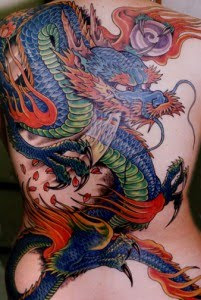In Japan, although only clay statues remain to depict these tattoos, the history of the Japanes tattoo can date back as far as 10000 BC. This places the Japanese tattooing as old as the Paleolithic era Later these tattoos would be found on a person’s body as a means of noting their social status or religious influences.

All the way up until the Edo period which fell between 1600 and 1868 AD, the Japanese tattoos would undergo many positive and negative changes. On the positive side they would be considered a form of social status or religious belief, while on the negative side, due to the Kofun period, criminals would also start to use the tattoo for their own purposes.
It was not until the Meiji period in Japanese history that the tattooing became a fully criminal based art form. During this time period, the Japanese government wanted to make a good impression on westernized society and outlawed it completely. This gave way to the concept of irezumi and its use in the criminal underworld of Japan. It became such a big issue that people who had full body tattoos were not allowed into public baths in an attempt to keep the Japanese Mafia, or the Yakuza as they are called out of their businesses. Even today this is still practiced in many baths, hot springs and fitness clubs.
Today, the old art form of the full body Japanese tattoos is becoming more and more popular. While some people prefer just the standard single tattoo based on Japanese letters, others go all out and have a traditional tattoo made through the course of many years of visits to the tattoo parlor. Maybe some day the times will change and those with full body tattoos will be able to come and go as they please in bat, hot springs and fitness establishments in Japan, but that may be a while.